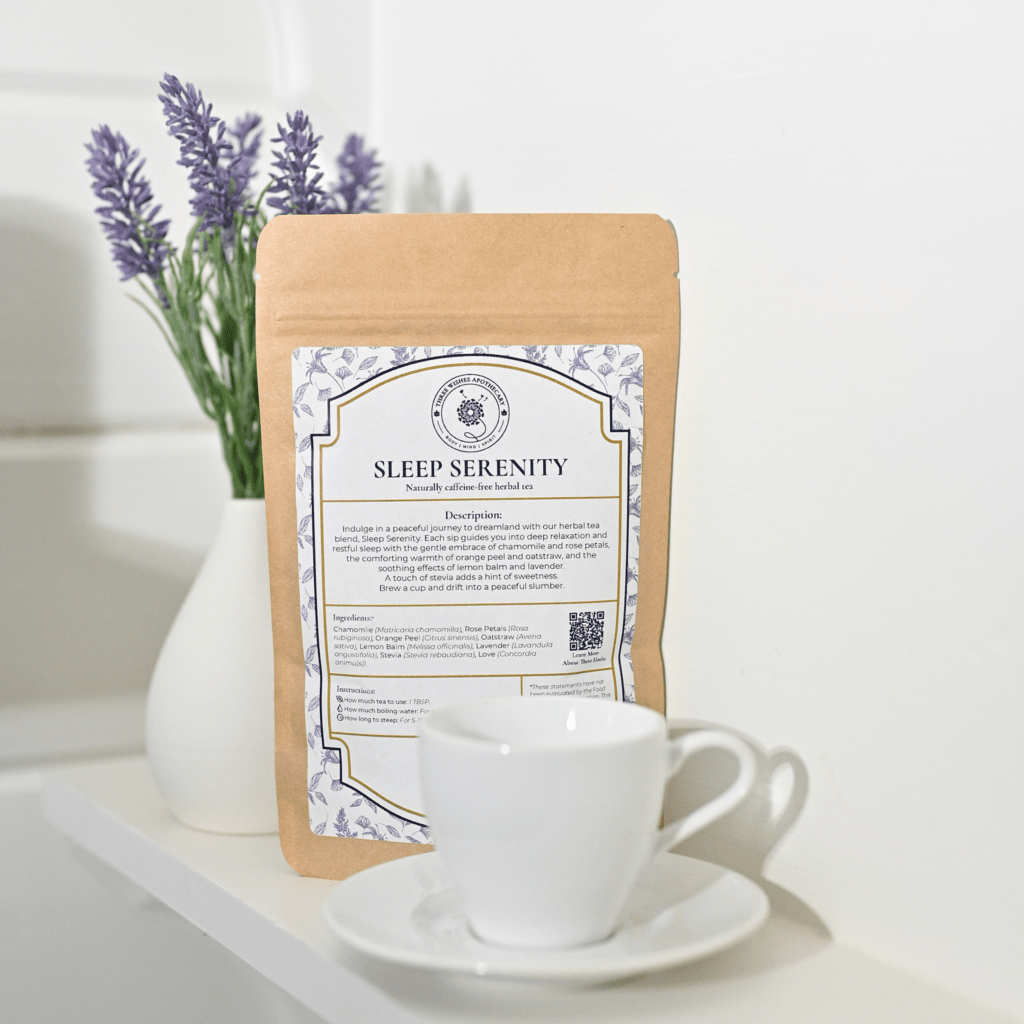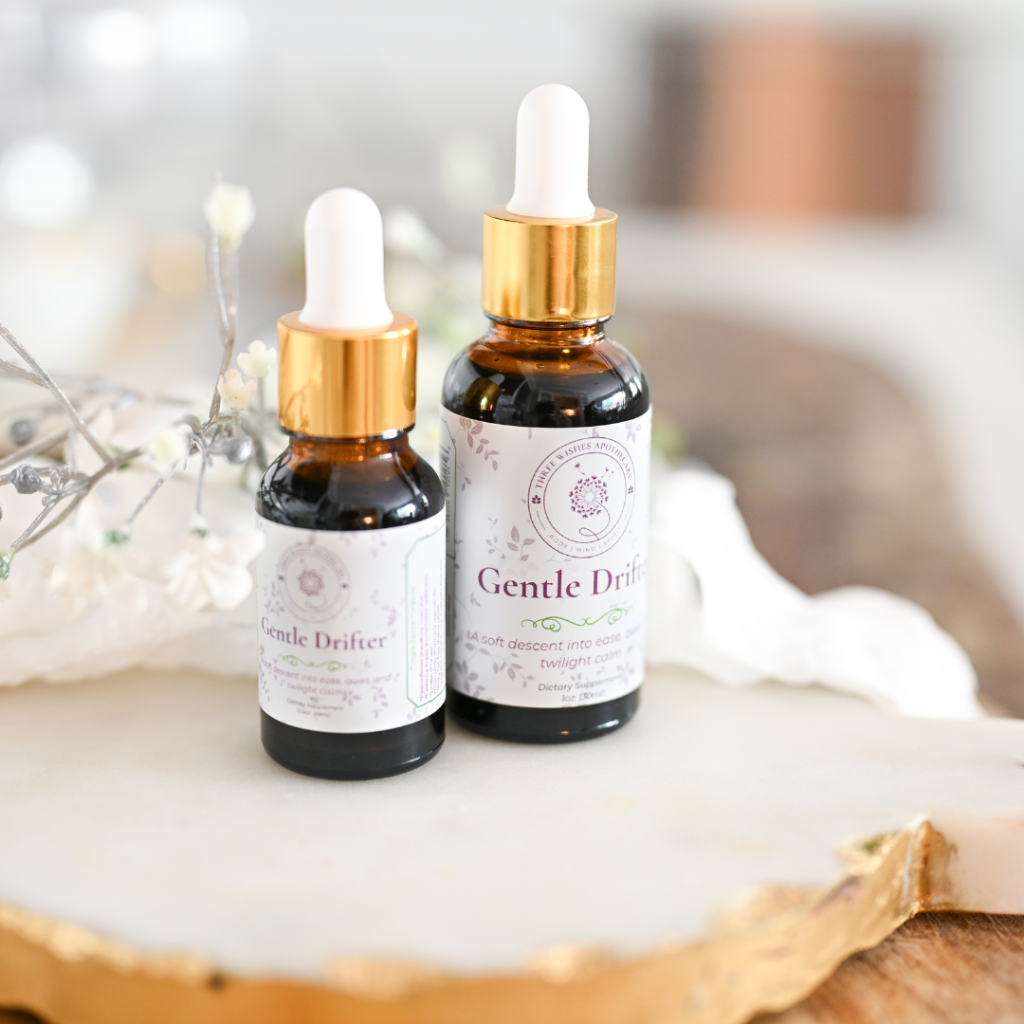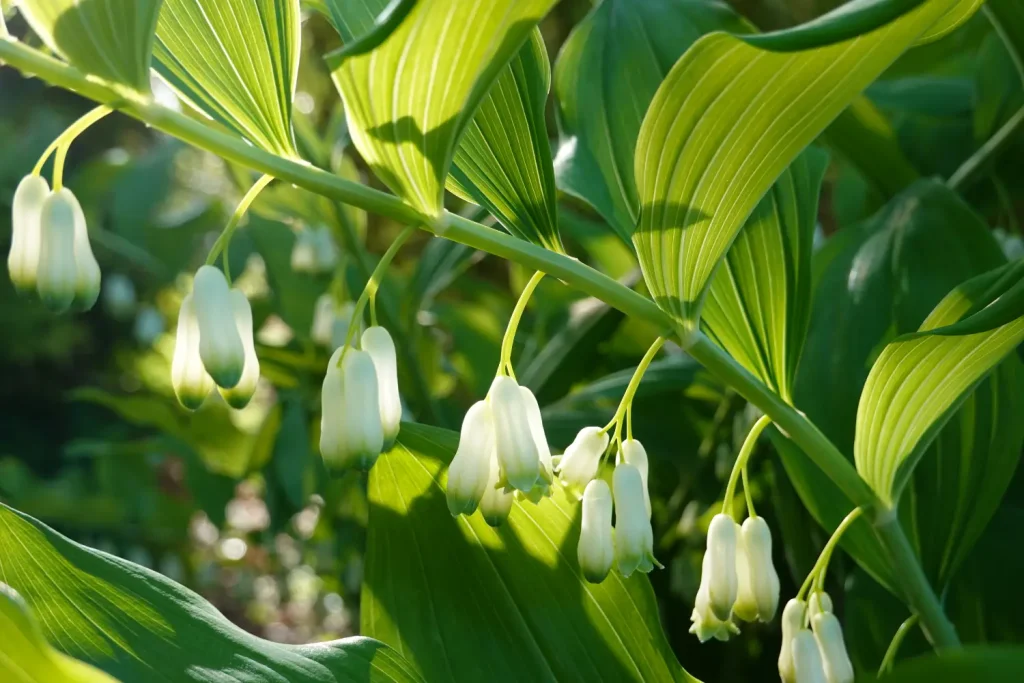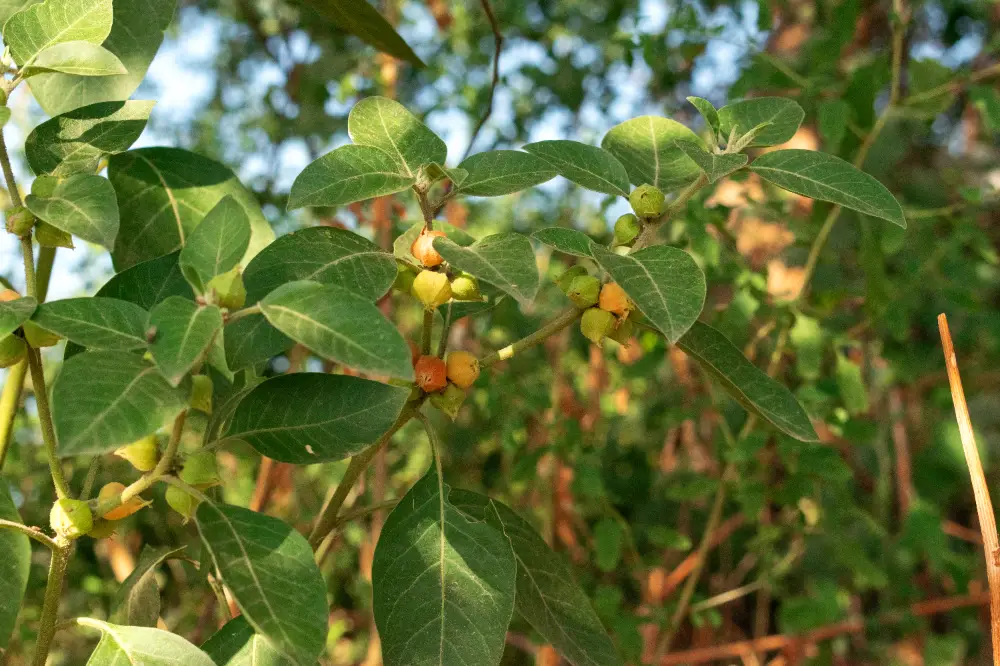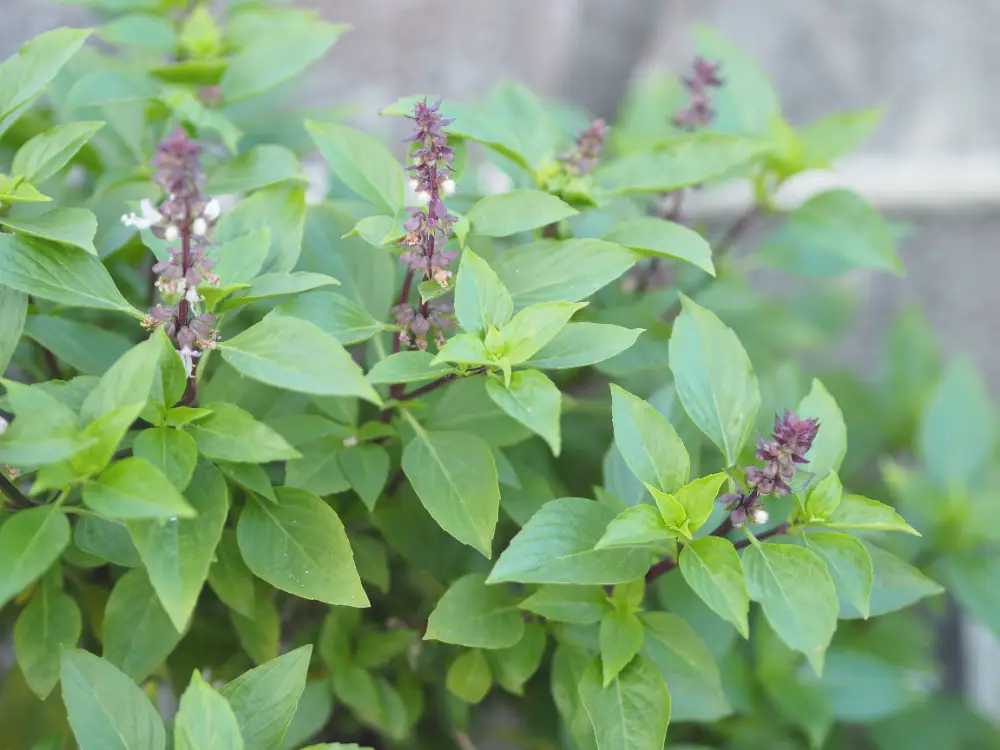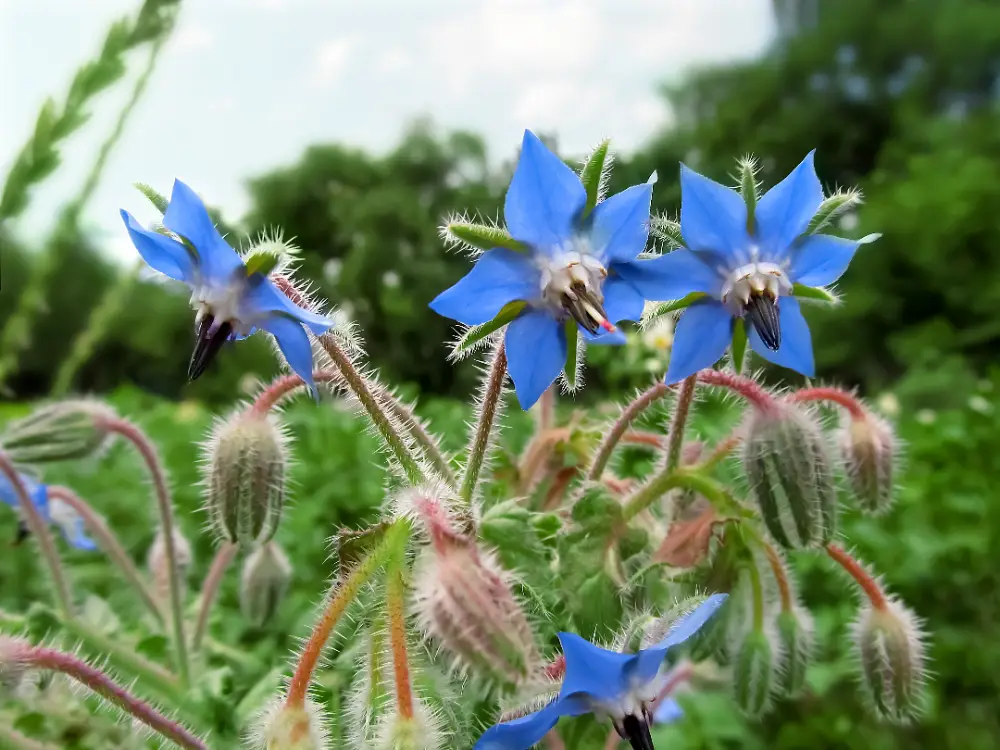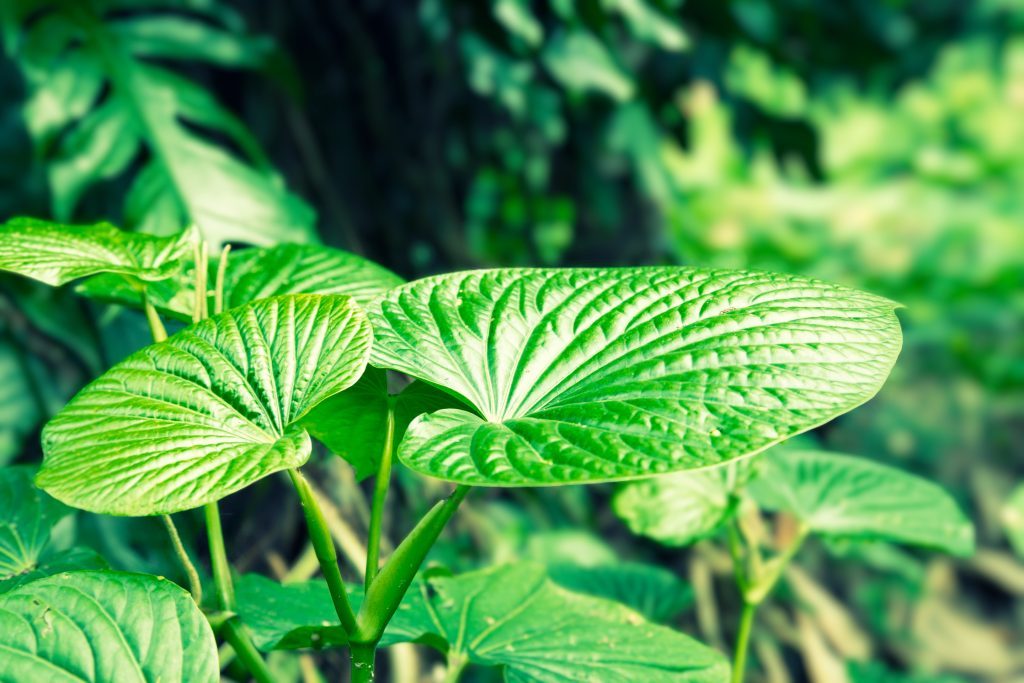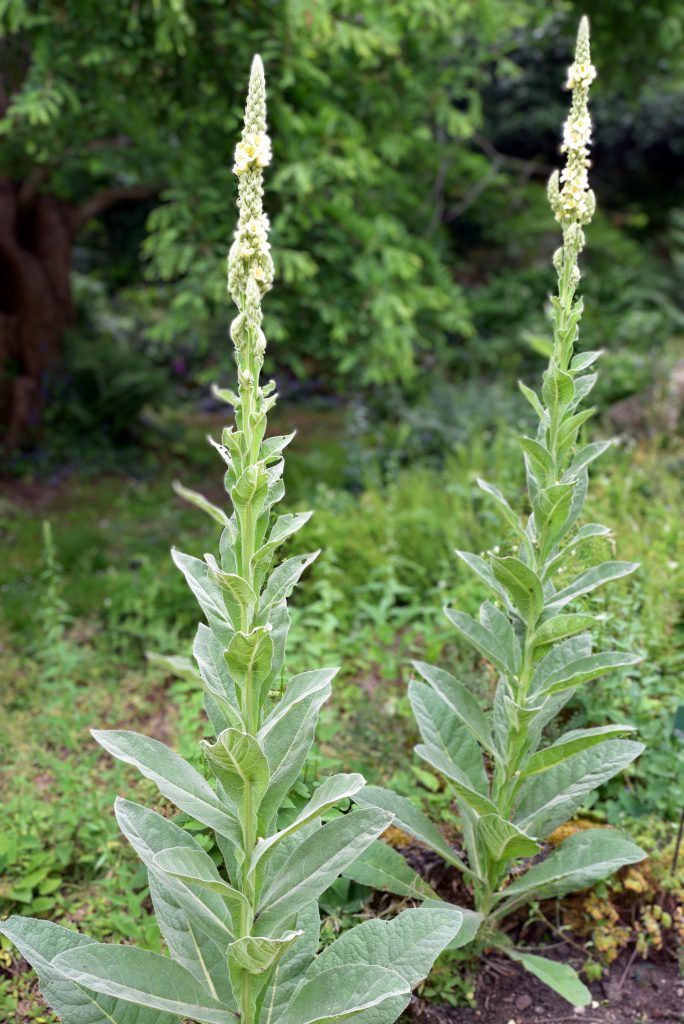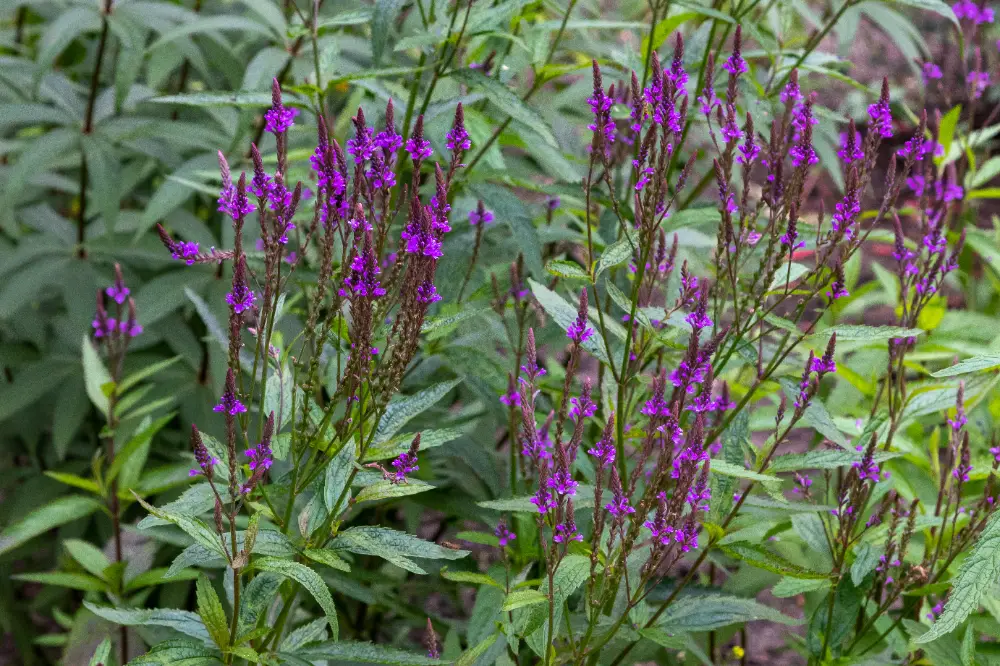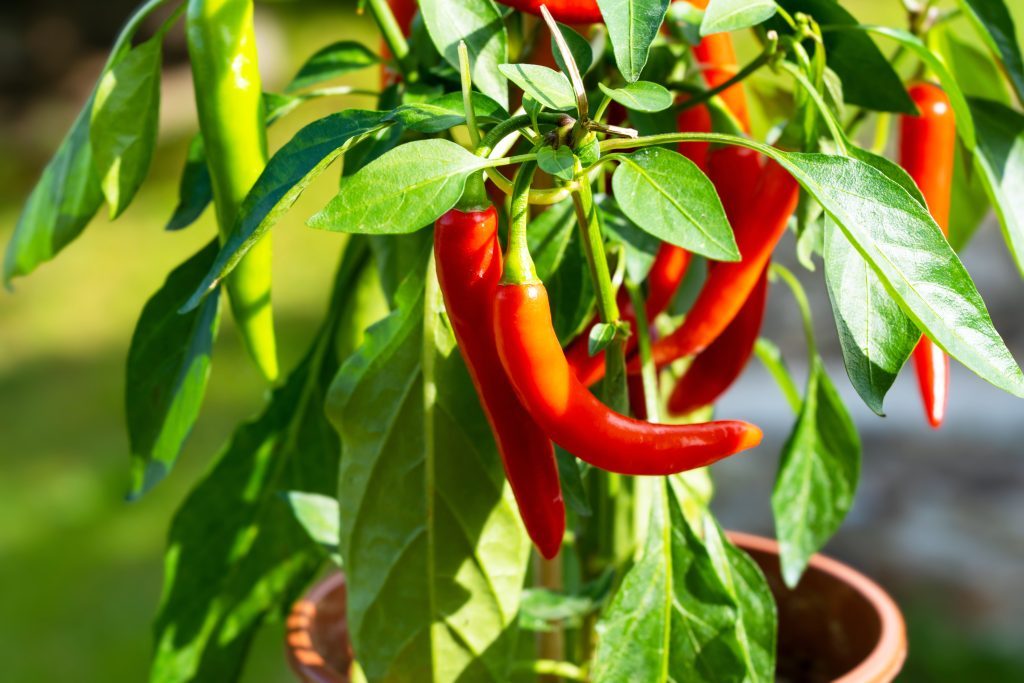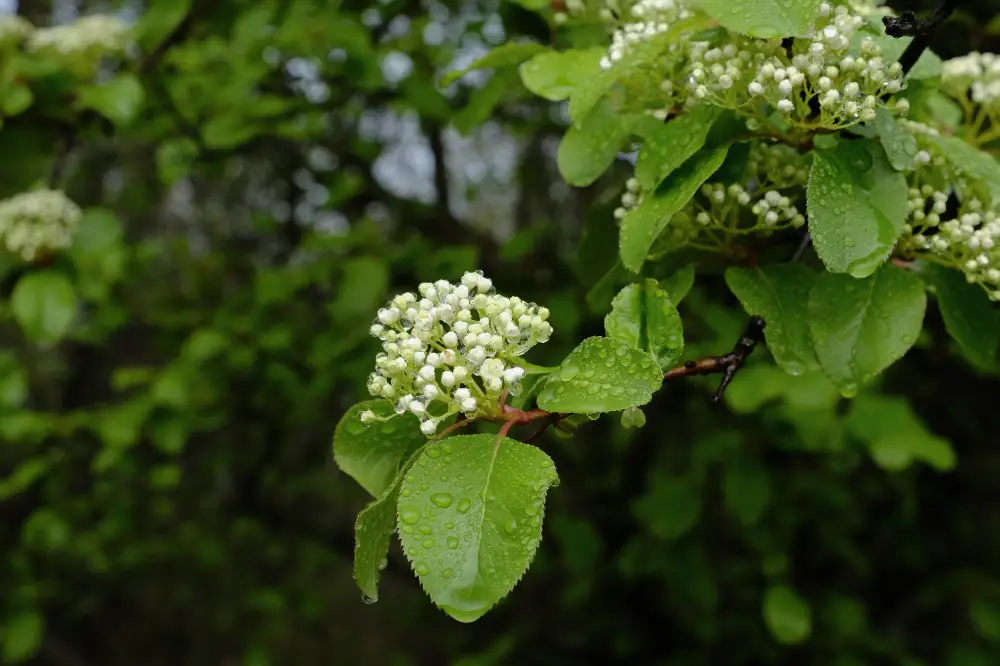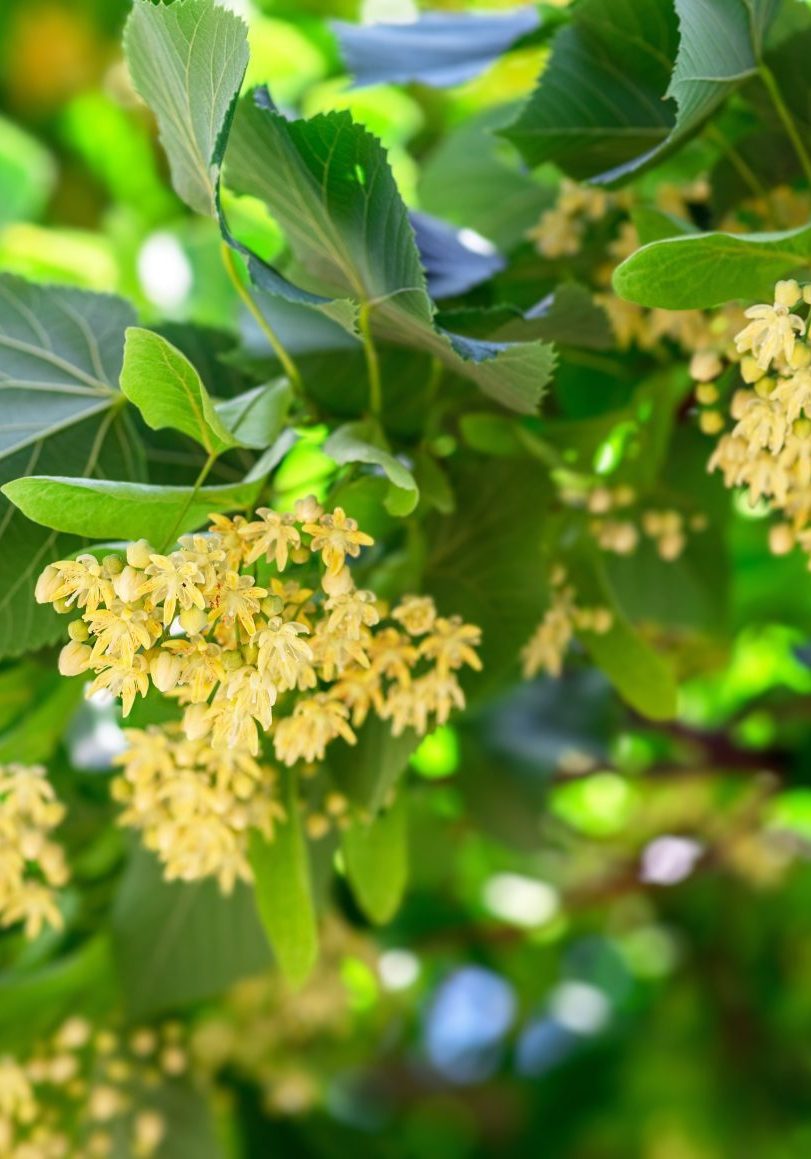
Linden
Tilia spp. (argentum & europaea)
Malvaceae (formerly Tiliaceae) Mallow Family
“The Heart Soothers: Uplifting the Spirit, Calming the Nerves, and Supporting Heart Health.”
Other names:
Lime Tree, Silver Lime (Tilia argentum), Common Lime (Tilia europaea), Basswood
Superpower
Their flowers have long been used as a natural sedative, helping to ease anxiety, stress, and insomnia, while also supporting cardiovascular health by reducing high blood pressure and improving circulation.
Uses
Calming and Sedative: Linden flowers have been used for centuries in European folk medicine to calm the nervous system. The flowers are steeped in teas to treat anxiety, insomnia, and nervous tension.
Fever and Cold Remedy: Traditionally, Linden tea was used to promote sweating during fevers and colds, helping to break a fever and reduce congestion in the respiratory system.
Heart and Circulatory Health: Historically, Linden was used as a gentle remedy to support cardiovascular health, particularly for hypertension and poor circulation. It was seen as a heart tonic to improve blood flow and reduce high blood pressure.
Current Uses:
Nervine: Today, Linden is commonly used in herbal medicine to treat anxiety, stress, and insomnia. Its gentle sedative effects make it ideal for calming nervous tension and promoting relaxation.
Anti-inflammatory: Linden flowers are recognized for their anti-inflammatory properties and are often used to treat joint pain and inflammatory skin conditions such as eczema.
Antioxidant: Modern research has highlighted Linden’s role as an antioxidant, which helps protect the body from oxidative stress and supports the immune system.
Cautions
Considered a very safe herb, including for children. No known side effects or drug interactions have been reported.
An allergic reaction to linden pollen in a linden flower tea was reported and confirmed by patch test (De Smet 1993: Faillers 1989)
Known Chemical Constituents
Flavonoids:
-
- Tiliroside, Quercetin, Kaempferol, Astragalin, Quercetin glycosides: These flavonoids contribute to anti-inflammatory, antioxidant, and calming properties, particularly beneficial for cardiovascular and skin health.
Mucilage:
-
- Polysaccharides, Arabino-galactans: These provide demulcent and soothing properties, helping to calm irritated mucous membranes in the respiratory and digestive systems.
Volatile Oils:
-
- Farnesol, Geraniol, Linalool: Contribute to the aromatic, relaxing, and sedative qualities of Linden, often used in aromatherapy.
Tannins:
-
- These provide astringent properties, helping with inflammation and skin conditions.
Phenolic Acids:
-
- Caffeic Acid, Chlorogenic Acid, Coumaric Acid: Known for their antioxidant and anti-inflammatory benefits, helping to protect the body from oxidative stress.
Botanical Description
Growth Habit:
Both species are large deciduous trees that can reach heights of 20 to 35 meters (65-115 feet). They have a broad crown with spreading branches and a straight, sturdy trunk.
Leaves:
- Tilia argentum: The leaves are heart-shaped with a serrated edge and are covered in a silvery-white fuzz on the underside, giving the tree its common name, Silver Lime. The leaves grow between 7 to 12 cm in length.
- Tilia europaea: The leaves are heart-shaped and have toothed edges but lack the silvery underside, giving them a rich green appearance. They grow about 6 to 10 cm long.
Flowers:
Both species produce fragrant, yellowish-white flowers in clusters, blooming in late spring to early summer. The flowers are known for their sweet scent and are rich in nectar, making them attractive to bees. The flowers are used in medicinal preparations for their calming and soothing properties.
Bark:
The bark is gray and smooth when young, becoming rougher and furrowed with age.
Fun Facts
The Linden tree has been a symbol of love, friendship, and community in European culture for centuries. In Slavic mythology, Linden trees were often planted in the center of villages as a gathering place for the community, where celebrations, rituals, and social gatherings would take place. It is also known as the “tree of lovers”, with its heart-shaped leaves symbolizing romantic love and emotional healing.
Parts Used
Flowering Tops, leaf
Harvest
Timing:
The ideal time to harvest Linden flowers is in late spring to early summer when the trees are in full bloom. It’s best to gather the flowers on a dry, sunny day to ensure the highest concentration of essential oils and active compounds.
Method:
- The flowers and bracts (leaf-like structures attached to the flowers) are harvested together by hand, being careful to avoid bruising or damaging the delicate blooms.
- Once harvested, the flowers should be dried in a well-ventilated, shaded area to preserve their medicinal properties.
Storage:
After drying, store the flowers in airtight containers away from light and moisture. When stored properly, dried Linden flowers can retain their potency for up to 1 year.
Preparations
Linden flower can be brewed into teas, used in aromatherapy, or infused into syrups and tinctures.
Sacred Rituals
Often associated with goddesses of fertility, love, and protection. During rituals of renewal, people would sit beneath Linden trees to gain clarity and emotional strength, believing that the tree’s energy would help heal emotional wounds and bring peace to the mind and heart.
Affirmations
“I am at peace and harmonious. Like the linden flower, I am surrounded by love and tranquility.”
Spiritual Associations
In European folklore, Linden trees were considered sacred and a source of divine healing energy. The tree was believed to provide protection from harm and negativity, and it was commonly planted near homes to safeguard the inhabitants.
Functions
A substance or agent that reduces inflammation in the body, soothing irritation, swelling, or redness in tissues.
Antispasmodic
A substance or agent that helps relieve or prevent involuntary muscle spasms, cramps, or contractions in smooth or skeletal muscles.
AnxietyAnxiety is a psychological state characterized by excessive worry, fear, or nervousness, often accompanied by physical symptoms such as rapid heartbeat, restlessness, or difficulty concentrating.
CarminativeA substance or agent that helps relieve gas, bloating, and discomfort in the digestive system by promoting the expulsion of gas and soothing the digestive tract.
Colds and FluRespiratory illnesses caused by viruses, resulting in symptoms such as congestion, coughing, fever, sore throat, and fatigue.
Cough ReliefRefers to interventions or substances that soothe the throat, reduce irritation, and help alleviate coughing, particularly when it becomes excessive or uncomfortable.
DiaphoreticA substance or agent that promotes perspiration, helping the body regulate temperature, detoxify, and respond to fevers.
Digestive & Elimination HealthThe overall well-being and optimal functioning of the digestive system, which includes the gastrointestinal tract, liver, pancreas, and other supporting organs. It encompasses the processes of breaking down food, absorbing nutrients, and eliminating waste, as well as maintaining a healthy balance of gut microbiota.
DiureticA diuretic is a substance that promotes the increased production and excretion of urine, helping the body eliminate excess fluids and salts through the kidneys.
Expectorant (clears mucus)Fever TreatmentRefers to substances, therapies, or practices used to manage elevated body temperature, reduce discomfort, and support the body’s immune response during illness.
HypotensiveA substance or agent that helps lower blood pressure, supporting cardiovascular health and reducing the risk of hypertension-related complications.
Immuno-modulatorA substance or agent that helps regulate and balance the immune system, either enhancing or suppressing immune activity as needed to maintain optimal immune function.
Infection TreatmentThe use of substances, practices, or interventions to manage and eliminate infections caused by pathogens such as bacteria, viruses, fungi, or parasites, while supporting the body’s healing process.
Migraine ReliefMigraine relief refers to interventions or substances that alleviate the pain and symptoms associated with migraines, such as throbbing headaches, nausea, and sensitivity to light or sound.
Nervine sedativeA nervine sedative is a substance that calms the nervous system and promotes sleep or deep relaxation, often used to alleviate anxiety, agitation, or insomnia.
Nervine TonicA nervine tonic is a substance that nourishes, restores, and strengthens the nervous system, promoting long-term resilience and balance.
RelaxationRefers to the process of calming the mind and body, reducing stress, and alleviating tension to achieve a state of tranquility and ease.
Respiratory HealthRefers to the optimal functioning of the lungs and airways, enabling efficient breathing and the exchange of oxygen and carbon dioxide.

